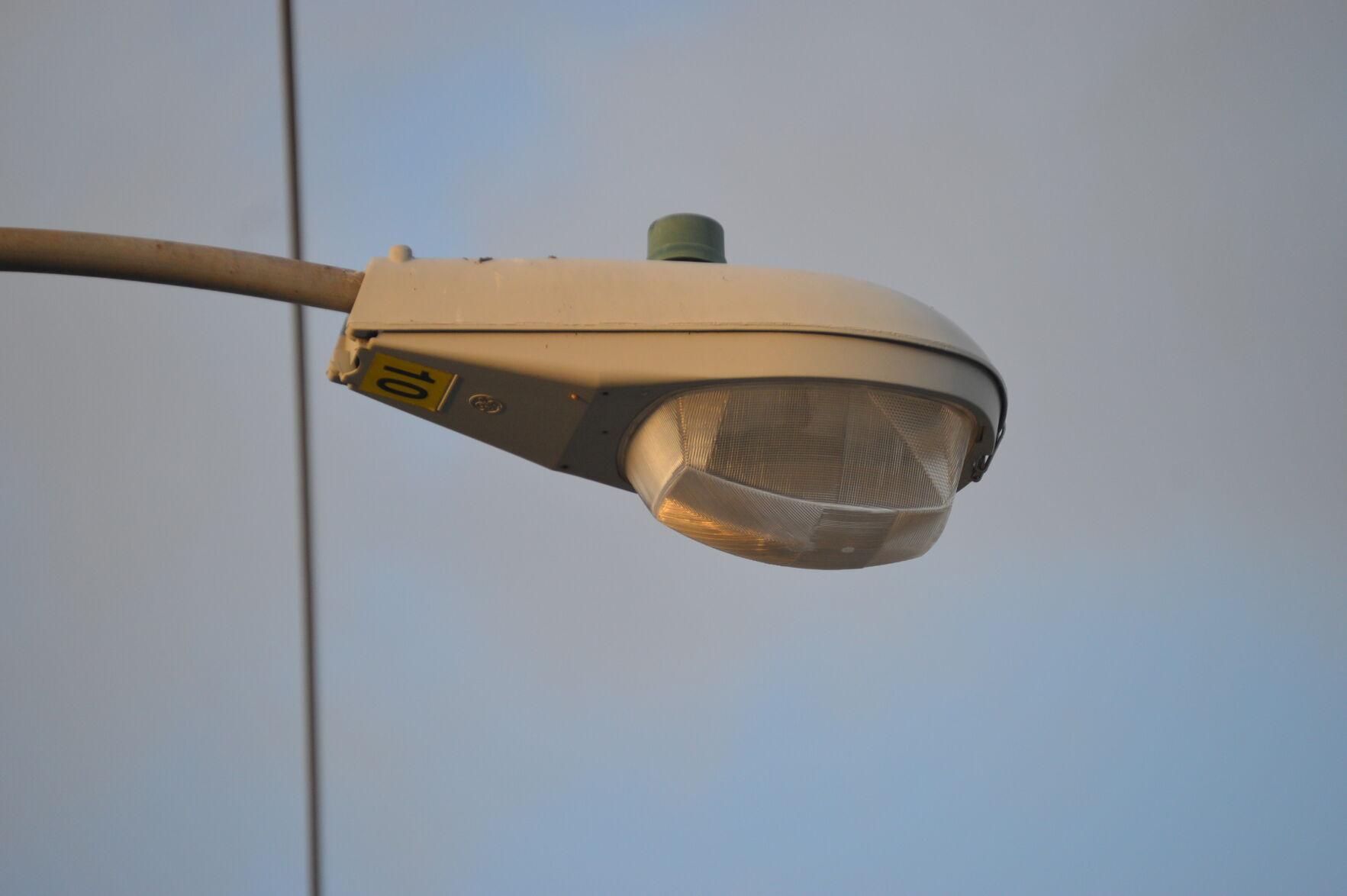Killeen to review lighting ordinances, delays decision on participating in light pollution program
Published: Thu, 01/25/24
Killeen to review lighting ordinances, delays decision on participating in light pollution program

Street lights, like the one attached to a telephone pole near the Herald, are currently owned by Oncor. However, with the approval of an initial offer letter, Killeen is on the track to take control of its streetlights.
Jack Dowling | Herald
Killeen Daily Herald
By Kevin Limiti | Herald
January 24, 2024
The Killeen City Council passed a motion of direction to review its lighting ordinances and decide later whether to pursue certification in the DarkSkies program.
The vote on Tuesday was 5-2 with Councilman Jose Segarra and Councilman Joseph Solomon voting against.
The City Council discussed in detail the DarkSky program—which combats light pollution—but also weighed its potential costs with its benefits.
Councilman Riakos Adams brought this item up on Nov. 14 as a future item for discussion saying he was asked by a citizen about participating in the program.
Adams referenced the famous Texas ditty about the stars being bright deep in the heart of Texas.
“This was an opportunity for us to still see the light in the song,” he said. “The stars are bright. And I support that.”
According to the Texas Chapter of DarkSky International, the heritage in that song is being “taken away from us in many parts of our great state.”
Wallis Meshier, assistant director of development services, gave the presentation, explaining that DarkSky International is a “nonprofit organization dedicated to restoring the nighttime environment and protecting communities from the harmful effects of light pollution through outreach, advocacy and conservation.”
The DarkSky International organization administers the program to protected areas, parks and communities. Some of the principles of the program is that light should only be used when “useful, targeted and directed” and that a warmer light color should be used as often as possible.
She said that a representative from DarkSky was willing to come down and give a more in-depth presentation.
There are only seven certified DarkSky communities in Texas. These include places like Fredericksburg, Dripping Springs, Blanco and Bee Cave.
However, the populations of these cities are far below that of Killeen. The highest population was more than 24,000 the lowest only 660.
The certification process typically takes one to three years, Meshier said.
Currently, the city of Killeen’s lighting ordinances requires lighting at off-street parking areas to be reflected away from residential areas. However, lighting trespass between commercial areas is not prohibited.
There is also a minimum amount of lighting required for parking lots with more than 30 cars. There is no maximum amount of lighting.
Councilman Michael Boyd said he could “see the advantages of the program improving public safety, minimizing light pollution and reducing energy consumption.”
But he was concerned about the cost and implementation.
Boyd asked whether Meshier thought the program had value to the city.
She said it was “worthwhile.”
“It’s especially worthwhile in places that have observatories” she said, or when the skies are already dark.
She said it could be beneficial to tourism. The only large city she was aware of that was on its way to being certified was Tucson, Arizona.
“I think that we could certainly benefit from an outdoor lighting ordinance that adopt some of these principles and policies without pursuing certification,” Meshier said.
Segarra said he was “more in the middle.”
“I think that if this something we do pursue, I think an update is good,” he said, but explained he thought the costs could be very high. “And that’s probably why you’re seeing more of their smaller cities that get certified.”
Some of those costs, according to Meshier, include a retrofit study and events in order to comply with outreach requirements.
Segarra asked about what ONCOR’s role would be if they decided to change the light fixtures.
“We could tell them,” City Manager Kent Cagle responded. “And they would be happy to charge us to do that, but we would have to pay for it.”
This drew some laughter from attendees.